Technological processes involving the implementation of recycling usually require the connection of special equipment. These events do not always involve the receipt of new products. In most cases, enterprises are equipped with special presses to save space. To some extent, such actions can be called preparation for further waste collection and disposal. The most widely used is the baler-type waste paper press, which is available on the market in various versions.
What is the peculiarity of the baling press?
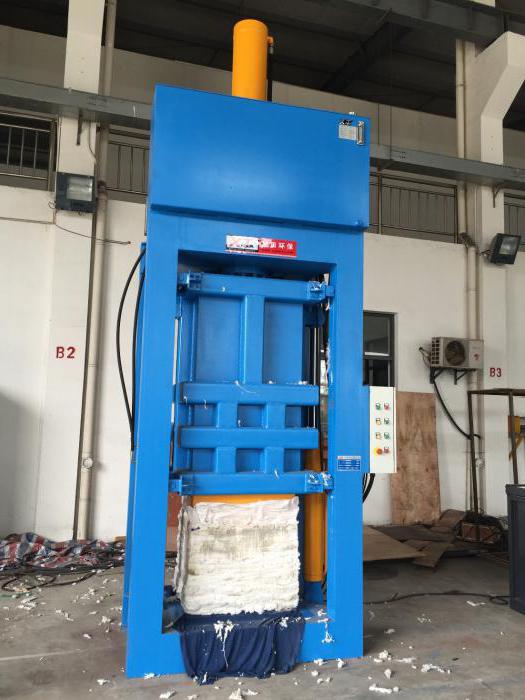
This equipment is used at combines, factories and other enterprises in order to reduce free space by forming special bales or briquettes. Systems of this type have two features that determined their wide distribution. Firstly, the hydraulic installation can have different dimensions, which allows it to be used even by small firms. In particular, a mini baling press is widely distributed, effectively coping with small volumes of waste paper and recyclables. Secondly, it is worth noting the approach to the workflow itself. Technique in the process of performing its tasks forms blocks of cardboard, waste paper and various waste, while requiring minimal space to service the operation.
The design of the equipment itself is focused on use by enterprises whose activities are not related to waste management. That is, a waste paper press of this type can well be used as additional or auxiliary equipment that solves secondary tasks. This is the main feature that distinguishes baling plants.
Key Features

As already noted, there are various modifications of such presses, therefore, the list of characteristics may vary. If we talk about the main parameters of this equipment, it will be the mass of the applied effort, power, power requirements, the size of the loading window, the performance and dimensions of the resulting briquette. The average mass of pressure is 8-10 tons. This is enough to service waste paper, cardboard and recycled materials. The performance of the installation also depends on this indicator and power. For example, a power potential of 2-2.5 kW and a designated force weight provide 4-5 finished briquettes per hour. But this is provided that the block size is 70 x 50 x 60 cm - standard bale parameters, which usually correspond to the format of the download window. As for energy supply, a small baling press is limited to connecting to a 220 V outlet, but industrial models require 380 V. It is worth paying attention to the possibility of the press working with different materials. Depending on the version, special requirements for servicing corrugated board, foam rubber, textiles, etc., may apply.
Press device
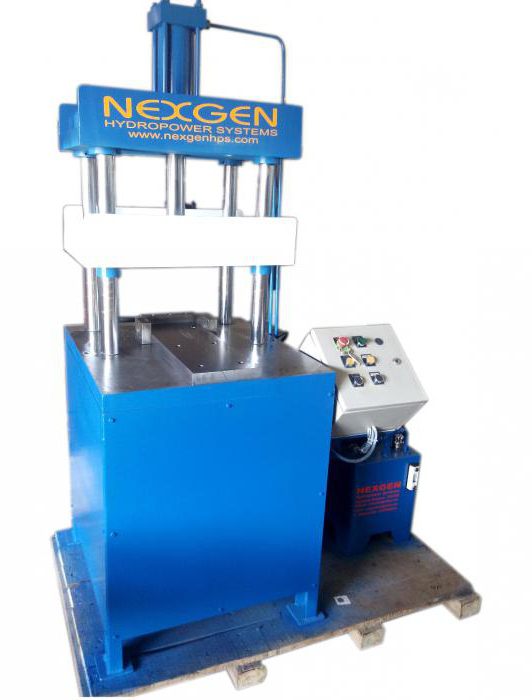
The traditional composition of this technique includes a bed, several cylinders, as well as hydraulic pressing mechanisms. The first two components form the power base of the structure, and the third is represented by a combination of working units and assemblies. In particular, the functional part consists of sliders and plunger hydraulic cylinders. The auxiliary cover is located in the bed opposite to the main one. During the execution of the working movement and the supply of fluid to the cylinders, the lids are closed.In terms of design, the hydraulic waste paper press may have other configurations, but such a device is the most common. Changes in component sizes are much more common.
Principle of operation
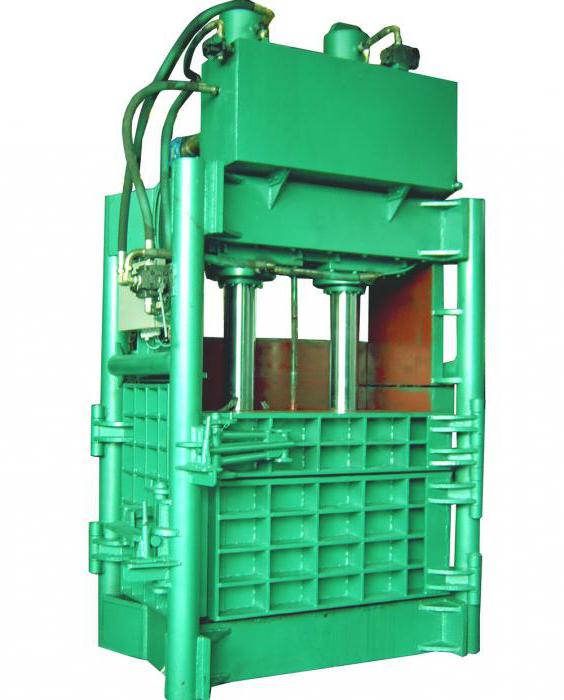
Initially, the cylinder covers are open and the chamber is empty. Manually or through a crane, the press niche is filled with waste. Next, the hydraulic drive starts, oil is supplied to the cylinders, and the covers are closed. The oil is distributed throughout the area of working mechanisms, the main function of the equipment begins. Since the press for waste paper involves the automatic release of finished packages, the operator practically does not interact with the dispensing window. In some versions, one of the hydraulic cylinders with a slider is also used as one of the steps of pressing.
Varieties
There are several classifications of presses of this type. The main separation is according to dimensions and performance indicators. From this point of view, industrial and mini-units stand out. Installations of the first type can assume a force of the order of 30–40 tons. As a rule, these are universal and multifunctional units that serve not only waste paper, but also metal processing products. The second variety is a mini-installation, which can be used by organizations using cardboard and paper as consumers. Typically, such users dispose of waste in small volumes.
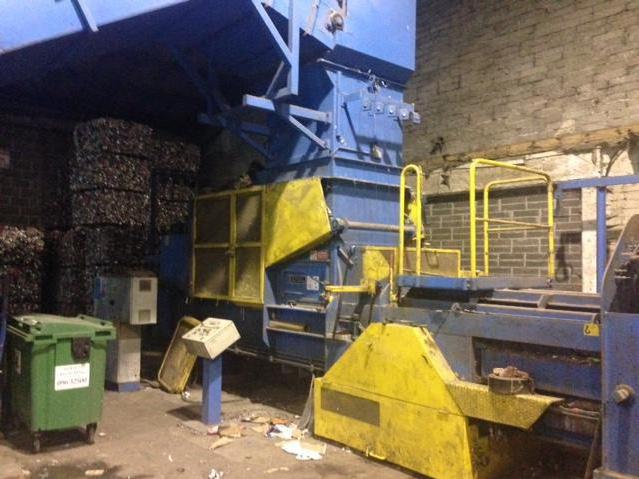
Price issue
Depending on the purpose and, accordingly, the technical parameters, the cost of this equipment is determined. The cheapest units are estimated at 70-80 thousand rubles. These are models with compact sizes, capable of forming briquettes from ordinary waste paper. A horizontal waste paper press is also quite popular, the price of which varies on average from 300 to 400 thousand rubles. The performance of such plants allows them to be used both at industrial facilities and at enterprises that are not related to the processing of raw materials. The upper price level is represented by models worth about 1 million rubles. These are entire complexes of hydraulic machines, which can occupy special departments at paper and wood processing plants.
Owner reviews of baling presses
Owners of this type of equipment are praised for their ease of use, decent performance and quality of the result. Thanks to baling plants, enterprise managers free up entire departments and technical rooms that were previously occupied with waste paper and various kinds of waste. In addition, the recycling press does not require special maintenance measures. A simple design and an affordable set of components allow craftsmen to easily perform repair operations.
Conclusion
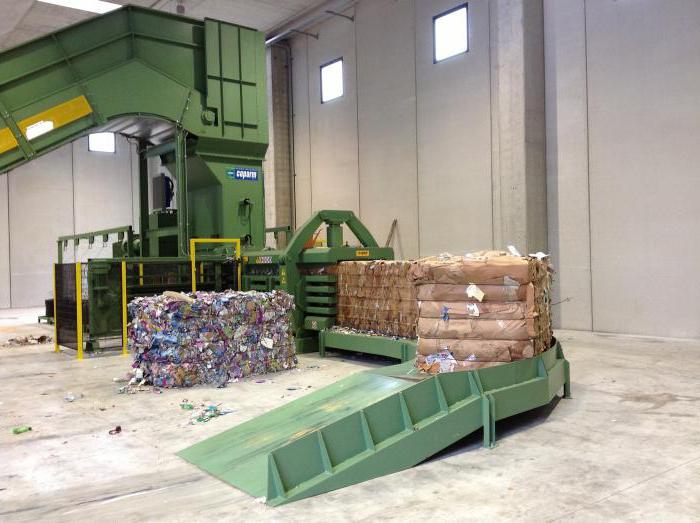
The principle of operation of hydraulic presses is the most efficient and rational in the class. The compact design of the equipment in combination with high productivity makes it possible to get rid of large volumes of recyclables for short periods of time. Manufacturers are also trying to give the waste paper press additional capabilities and improve quality characteristics. Some developers, for example, improve the quality of briquette formation by introducing additional strands, while others focus on the technological development of loading operations. At the same time, hydraulics capacities are also being improved - for example, in models costing from 300 thousand rubles. mechanics are highly resistant to mechanical damage, reliability and stability in the performance of their tasks.








